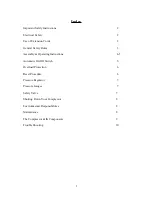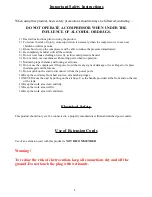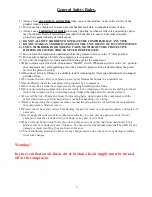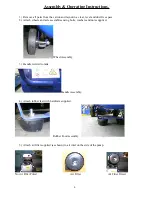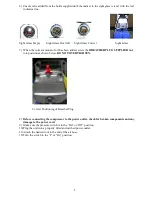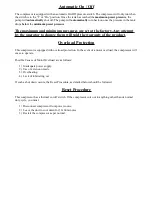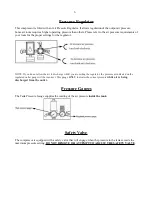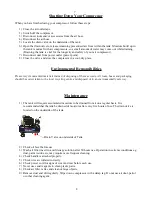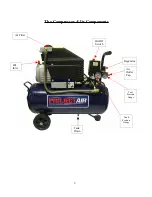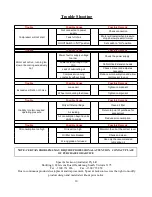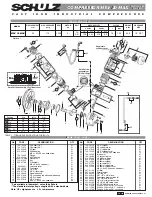
7
Shutting Down Your Compressor
.
When you have finished using your compressor, follow these steps:
1) Close the air outlet taps.
2) Switch off the compressor.
3) Disconnect tools and/or accessories from the air hose.
4) Disconnect the air hose.
5) Locate the drain valve on the underside of the tank.
6) Open the drain valve to release remaining pressurised air from within the tank. Moisture build up in
the tank is normal with air compressors, so a small amount of water may come out while draining.
(Draining the tank is vital for the longevity and safety of your air compressor).
7) Disconnect unit from power outlet (power point).
8) Close the valve and store the compressor in a cool, dry place.
Environmental Responsibilities
.
Please recycle unwanted materials instead of disposing of them as waste. All tools, hoses and packaging
should be sorted, taken to the local recycling centre and disposed of in an environmentally safe way.
Maintenance
.
1) The tank will require accumulated moisture to be drained from it on a regular basis. It is
recommended that the tank be drained of moisture after every five hours of use. The drain valve is
located on the underside of the tank.
Drain Valve on underside of Tank
2) Check oil level before use.
3) Wash air filter insert in a mild soapy solution after 50 hours use. Operation in extreme conditions e.g.
dust, paint residue etc, may require more frequent cleaning.
4) Check handle is attached properly.
5) Check tires are inflated correctly.
6) Check power cord for signs of wear and tear before each use.
7) Never use caustic agents to clean plastic parts.
8) Check air filter is free and clean of large objects.
9) Remove dust and dirt regularly. Wipe down compressor with a damp rag. Do not use alcohol, petrol
or other cleaning agent.
8


